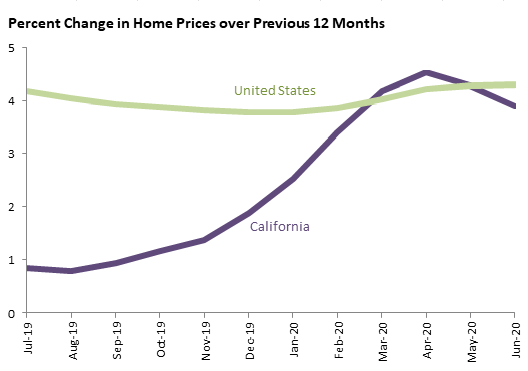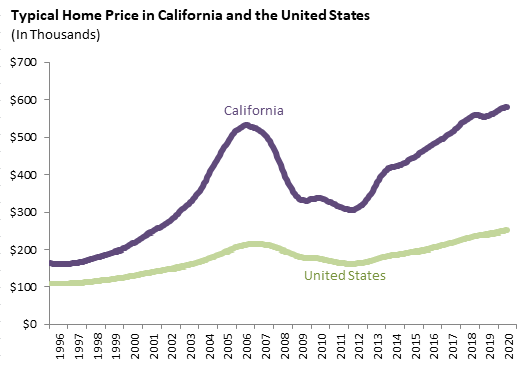Home prices are important to the California economy for a number of reasons. In the short and medium terms, home price increases often drive construction activity, which in turn spurs employment growth in a wide range of sectors. In the longer term, chronically high housing costs have hurt the state’s business climate and been a key reason California loses residents to other states on net in most years.
June 2020 data suggest that home price growth has slowed in California but not nationwide. The typical home in California has appreciated 3.9 percent since June 2019, while the national figure is 4.3 percent. As recently as April, the state’s home price growth outpaced the nation’s.
The slower home price growth that prevailed in 2018 and 2019 made a minor dent in the affordability gap between the state and the rest of the country. Housing in California has always been relatively expensive, and the gap has widened considerably since 2012. Previous recessions have had disparate effects on home prices: they were largely unaffected by the collapse of the dot-com bubble in 2001, while in the late 2000s the collapse of the housing bubble was the single biggest factor that led to the financial crisis. It is too soon to tell how the current recession will impact home prices, although the early evidence suggests a slowing in the most expensive areas possibly driven by a shift toward remote work.
The graph below shows appreciation over the past 12 months for the state’s 15 largest counties. The four central San Francisco Bay Area counties (Alameda, Contra Costa, San Francisco, and San Mateo) have seen little or no home price growth over the past 12 months, although this has not been the case in neighboring and equally expensive Santa Clara.
Source: Zillow



